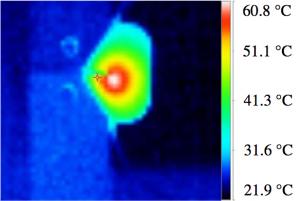ScienceDaily (Dec. 7, 2010) — You've seen it in movies: the human-like, robot assassin quickly regenerates its structure after being damaged beyond recognition. This "Terminator" scenario is becoming less far-fetched as recent advances in structural health monitoring systems have led to a variety of ways to identify damage to a structural system.
The novel autonomous material developed by Henry Sodano and colleagues uses "shape-memory" polymers with an embedded fiber-optic network that functions as both the damage detection sensor and thermal stimulus delivery system to produce a response that mimics the advanced sensory and healing traits shown in biological systems. An infrared laser transmits light through the fiber-optic system to locally heat the material, stimulating the toughening and healing mechanisms.
The material system is capable of increasing the toughness of a specimen by 11 times. After toughening the specimen, the crack can be closed using the shape-memory effect to recover an unprecedented 96 percent of the object's original strength. In fact, after the crack is closed, the new material is nearly five times as tough as the original specimen, even though it has been strained past its original failure strain point by a factor of four. The material and healing process can be applied while the structure is in operation, which has not been possible with existing healing techniques.
Disclaimer: Views expressed in this article do not necessarily reflect those of ScienceDaily or its staff.
Journal Reference:
- Michael E. Garcia, Yirong Lin, Henry A. Sodano. Autonomous materials with controlled toughening and healing. Journal of Applied Physics, 2010; 108 (9): 093512 DOI: 10.1063/1.3499351
Note: If no author is given, the source is cited instead.

